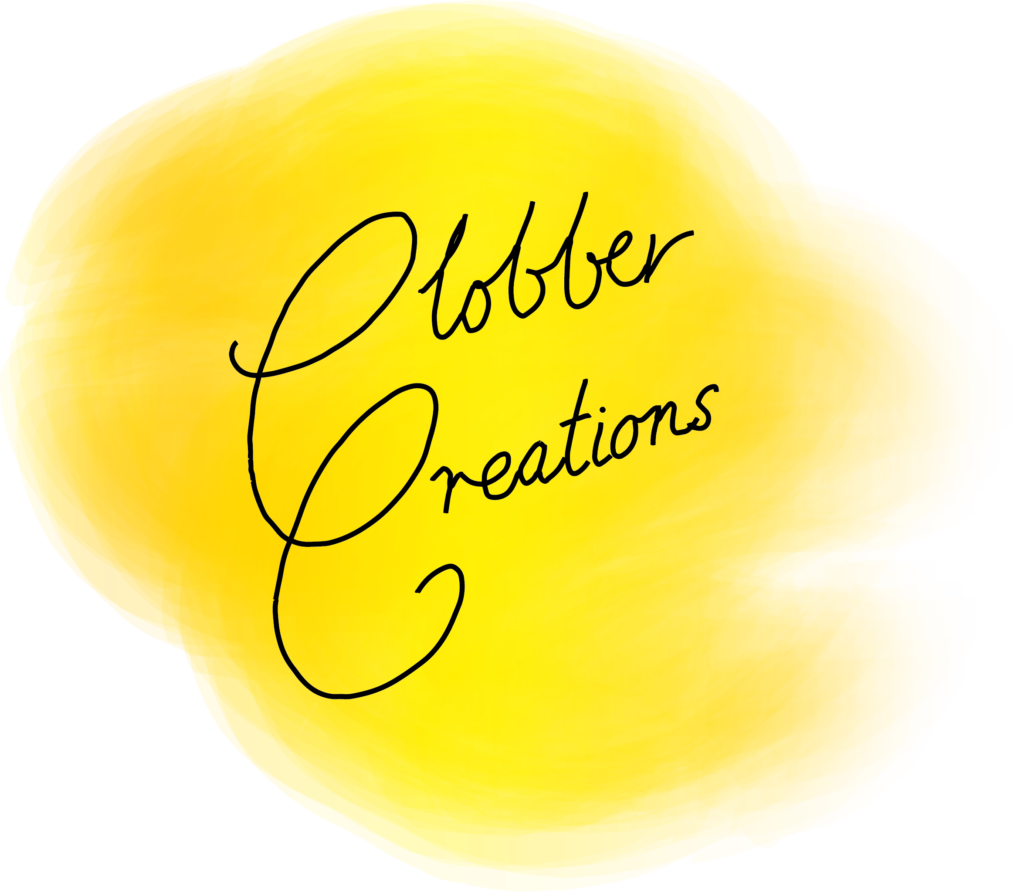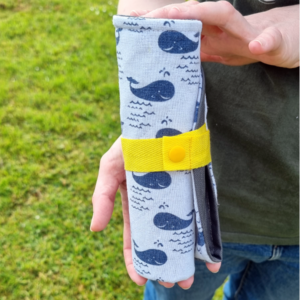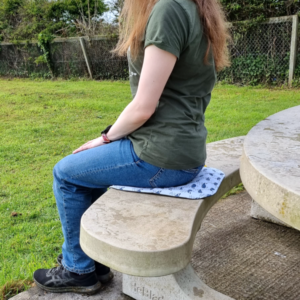Tutorial: Waterproof Sitting Mat
- Post author:clobbercreations
- Post published:May 23, 2022
- Post category:Accessories/Sewing
- Post comments:1 Comment
Review of the year: 2019
- Post author:clobbercreations
- Post published:December 29, 2019
- Post category:Accessories/Dressmaking/Inspiration/Sewing/Stash Busting
- Post comments:0 Comments
With the year drawing to a close, I thought I would reflect on my makes during 2019.
Pattern Review: So Sew Easy Serger Scrap Catcher
- Post author:clobbercreations
- Post published:December 15, 2019
- Post category:Accessories/Sewing/Stash Busting
- Post comments:0 Comments
Today I am sharing my thoughts on a free sewing pattern you can follow on the So Sew Easy website – it’s the Easy Serger Scrap Catcher!
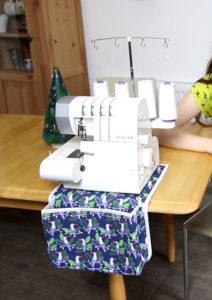
Details
- Pattern name: Easy Serger Scrap Catcher
- Variation/Style: N/A
- Design House: Pattern from So Sew Easy website
- Size I made: made according to the pattern’s suggested measurements
Fabric
I used some remnant fabrics to make this – I would say that the toucan fabric pictured is quilting cotton weight. From the image below, you can see I had two colour ways of this fetching fabric. I also added fusible fleece to it to give the final mat and pocket structure.
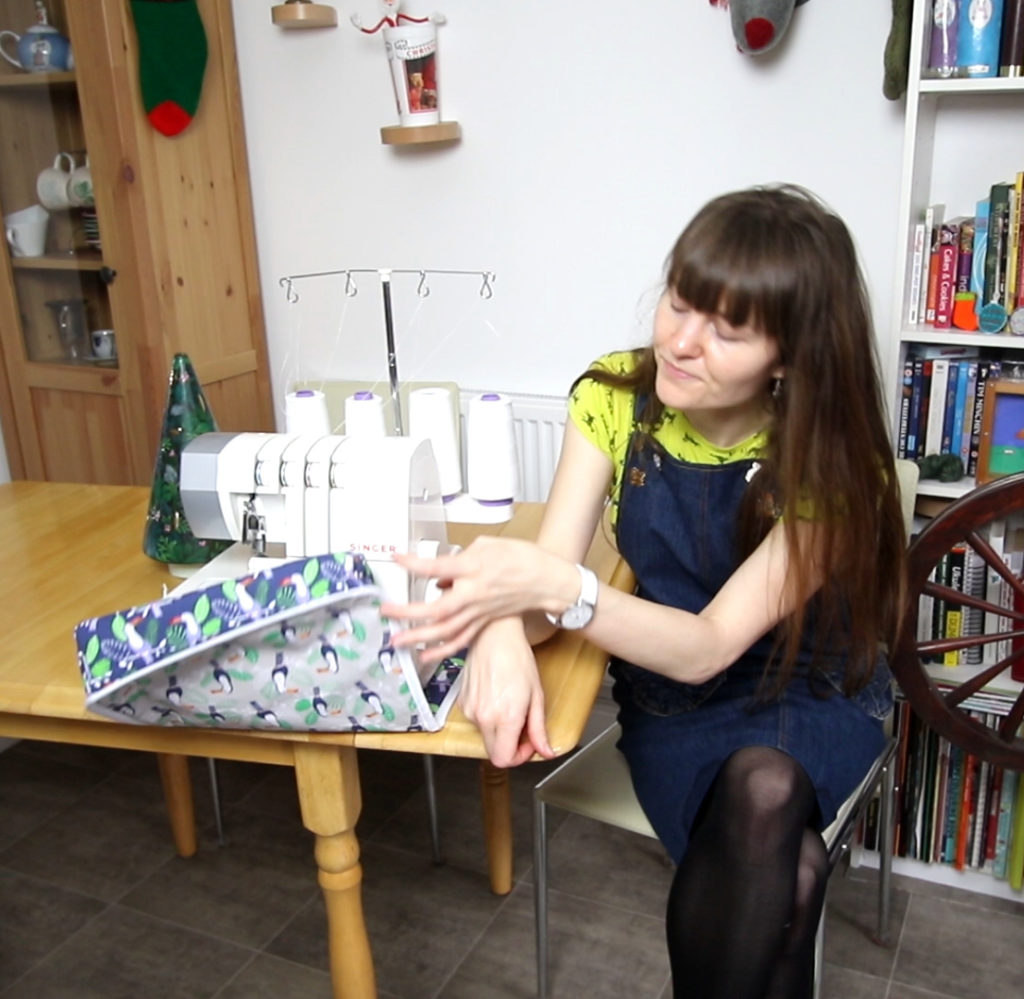
Difficulty
I found the bias binding element (all around the top of the pocket and all the edges) particularly challenging on this project. Usually, I opt for machine sewing one side down and then hand sew the other side in place, but I didn’t have the time on this occasion and opted for top stitching by machine. It is not my finest piece of work as a result as the tape dragged a bit, so if you haven’t used bias binding much, you may need to work carefully at this step!
Clarity
I printed a grey scale copy of the instructions and struggled, so I would recommend either reading off your screen or using colour! I am not sure whether I just wasn’t feeling great at the time or I had a fixed idea on how it would work, but I did struggle a bit with comprehension and may have veered off from the instructions on occasion.
The linked guide on how to create mitered corners with bias binding was really good.
Design and Fit
This pattern fits my overlocker perfectly – however it is a gift so I hope it fits the machine of the recipient!!
I love the big pocket for scraps at the front as well as the fact that it protects the table I am using while I overlock.
Time Taken
The longest aspect of this project was cutting all the sections out. I didn’t quilt (just ironed on the fusible fleece) so if you do this element, it will take a bit longer.
You could do this in a day, including cutting out, particularly if you are a savvy bias binder!
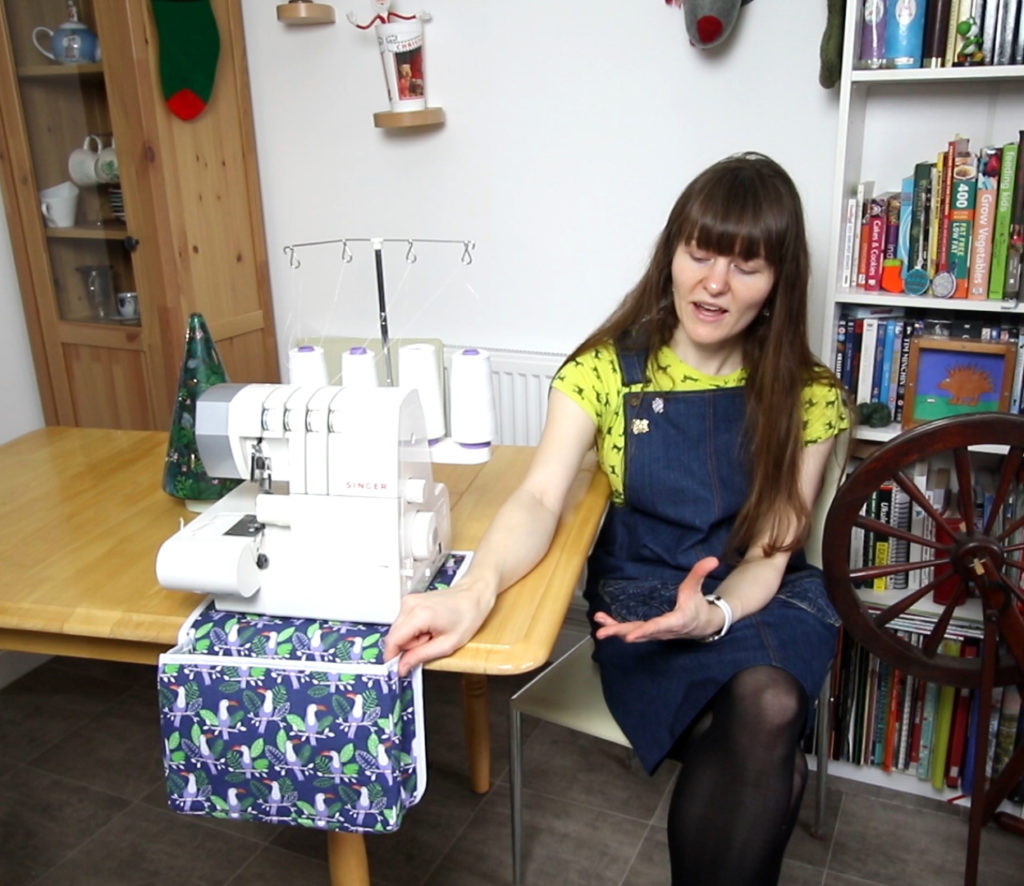
Conclusion
Love the concept, but I may have a play around next time to tweak the design for my own machine.
5 Ideas for quick sewing gifts (all free patterns/tutorials)
- Post author:clobbercreations
- Post published:December 8, 2019
- Post category:Accessories/Inspiration
- Post comments:0 Comments
I love to make a gift for my nearest and dearest, and while I start with huge ambitious plans, I’m normally grappling with time. Here are a few ideas if you find yourself wanting to make gifts but needing some faster options.
Make a mini Christmas Brooch!
- Post author:clobbercreations
- Post published:December 1, 2019
- Post category:Accessories/Sewing/Stash Busting
- Post comments:0 Comments
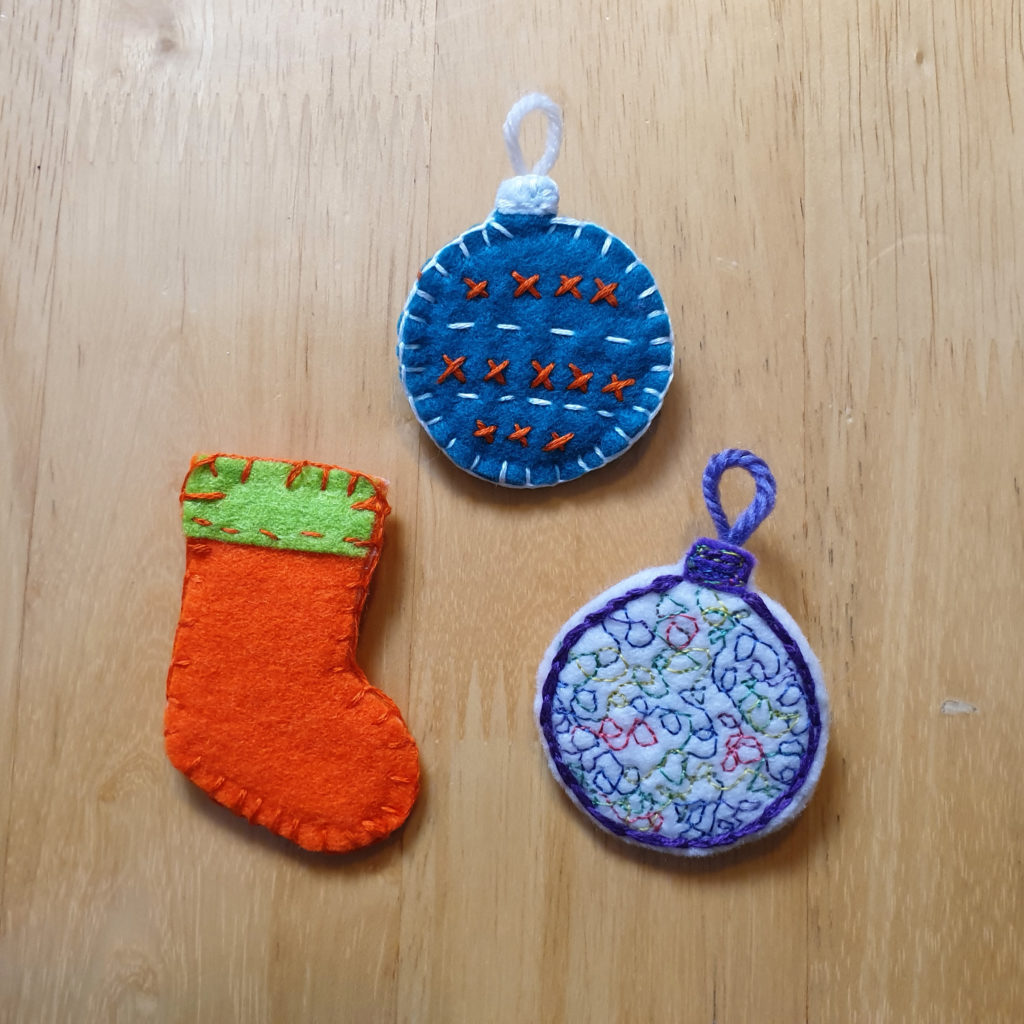
Fancy something to wear to get in the festive spirit but need something that will go with your pinafore or is less obvious than a festive jumper? A little Christmas brooch may be the answer.
What you need:
- Download the template for this make here
- Cardboard for the middle section (to improve the structure, but you could leave this out if not available)
- Felt scraps in the colours of your choice
- Embroidery thread in the colours of your choice
- Brooch back
- Scrap length of yarn if making the bauble design
- Double sided tape
- Bondaweb scrap (optional)
- Interfacing (optional)
- Paper scissors
- Fabric scissors
- Darning needle
- Sewing machine if you want to add decoration on the sewing machine
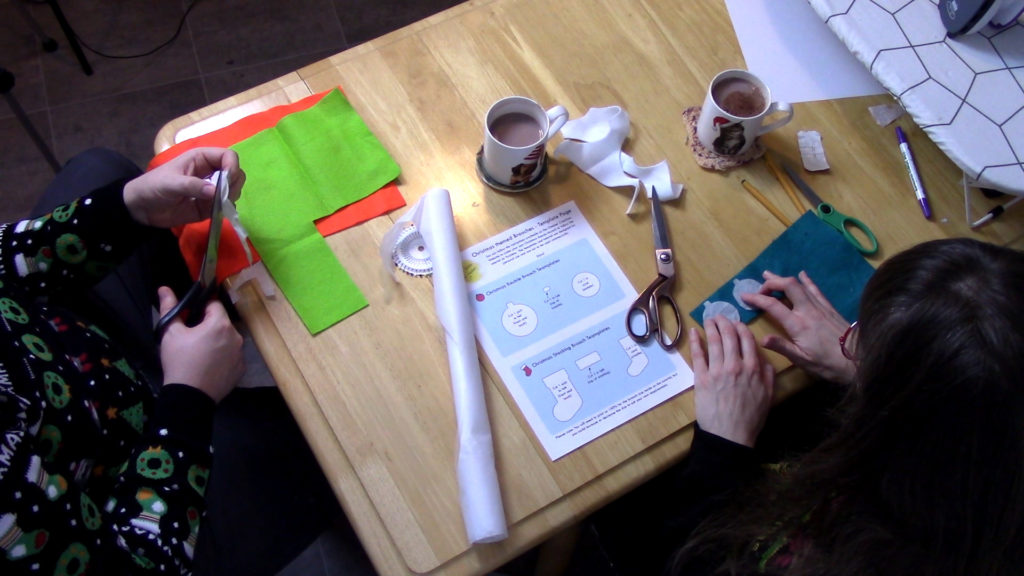
1. Draw out the main pieces of your design onto the interfacing if using and attach to the felt (or draw directly onto the felt if not using interfacing) and cut out
For the stocking design, you will need to ensure that you cut one on the reverse side if using the interfacing.
Attach to the interfacing by placing the shiny side of the interfacing on the felt so that the non-shiny side is facing upwards. Press with an iron until it attaches.
If you are not using interfacing, you can trace the design straight onto the fabric and then cut out.
If you want to embellish on the machine, do this before cutting the shape out of felt as it will be much easier!
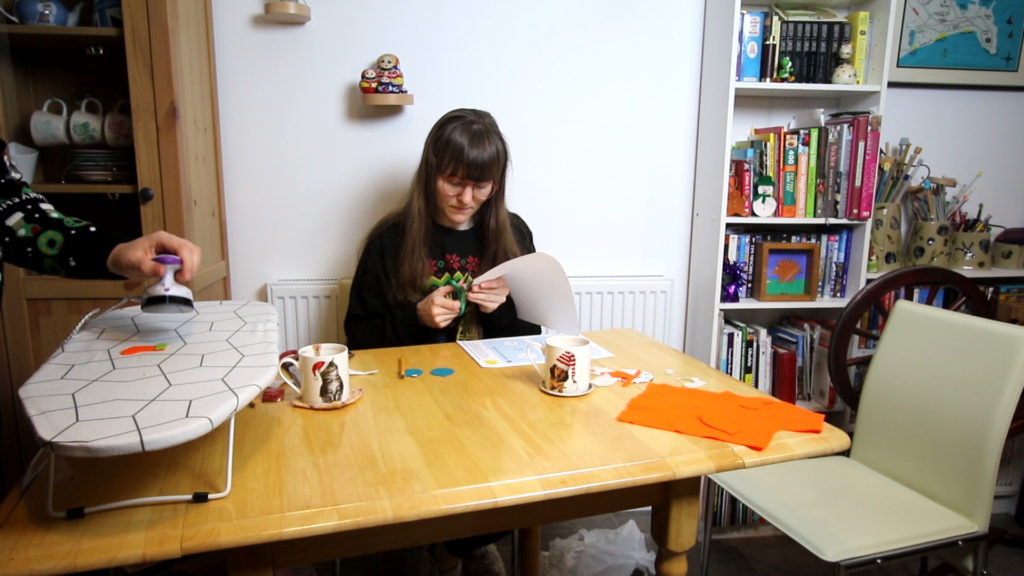
2. Attach the bauble top or stocking brim
I used interfacing to trace the shape and then attach to the main front piece, but you could just place on top and then sew in place.
Here, my partner used a straight running stitch to attach the bottom of the brim of the stocking, but you could choose a hand embroidery stitch of your choice. I used back stitch.
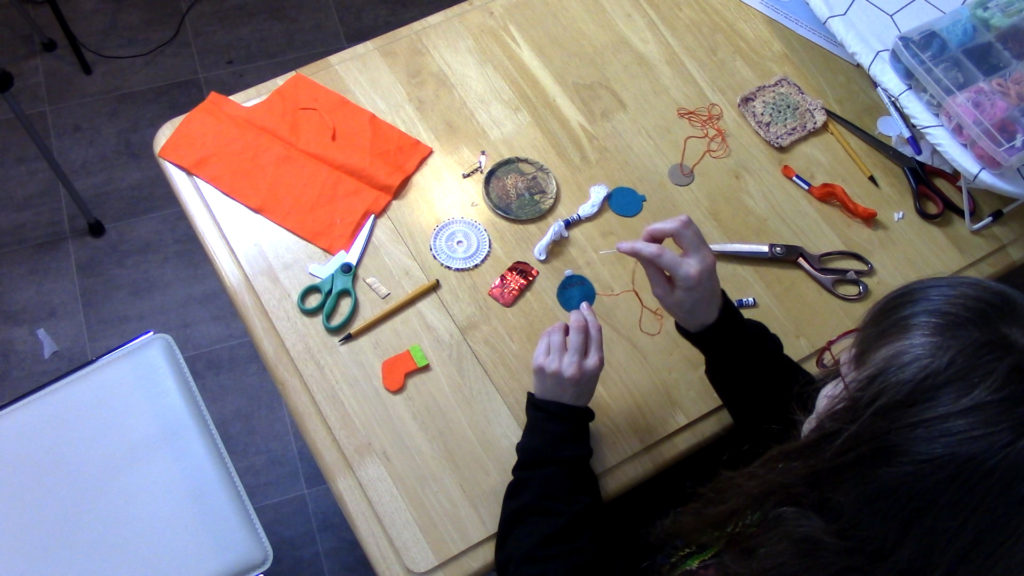
3. If you are adding any embellishment using hand embroidery, add this now to the front piece
On the blue bauble I made, I added some cross stitch shapes and running stitch to add a bit of detail in both orange and white thread. I used two strands of embroidery thread doubled (4 in total) – see the video for more about this.
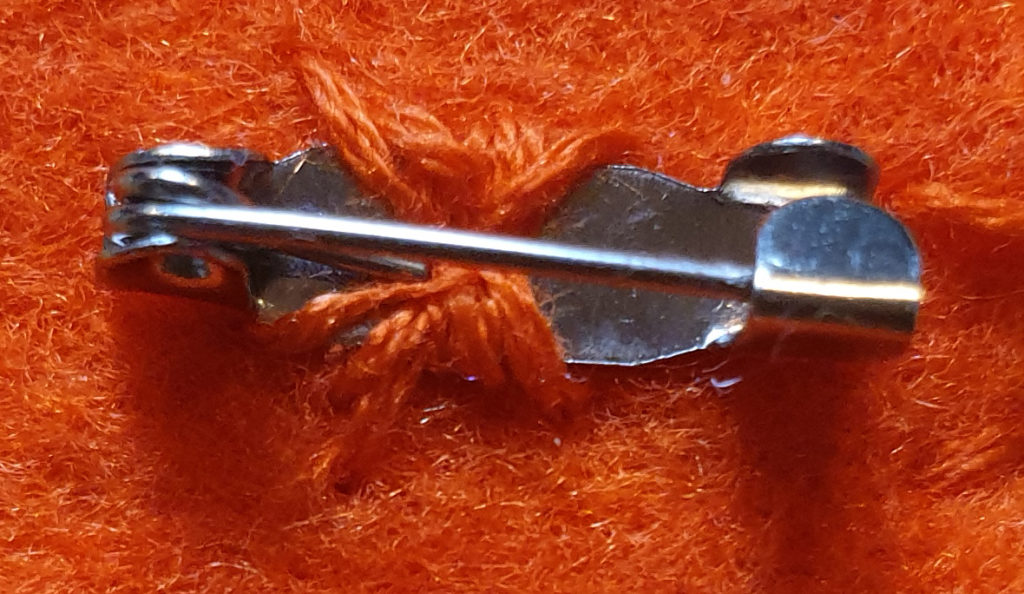
4. Add the brooch attachment to the back piece
Secure the brooch piece on the back piece in the top third of the shape securely with some thread.
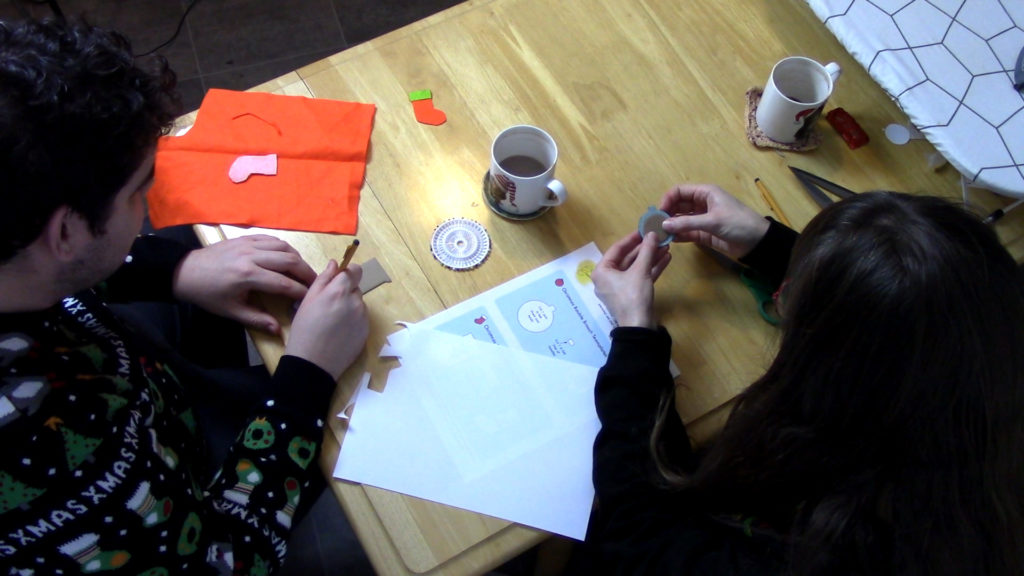
5. Add the cardboard middle, if using
I like using the cardboard middle to give the brooch a firmer shape and used some packaging rubbish for this.
Trace the shape of the middle piece onto the cardboard and cut it out. Next, attach right in the middle of the wrong side of the front piece with some of the double sided tape. This will help prevent it from moving when you stitch around the edges. Attach the back piece in the same way with double sided tape, by placing the piece over the front piece, wrong sides together.
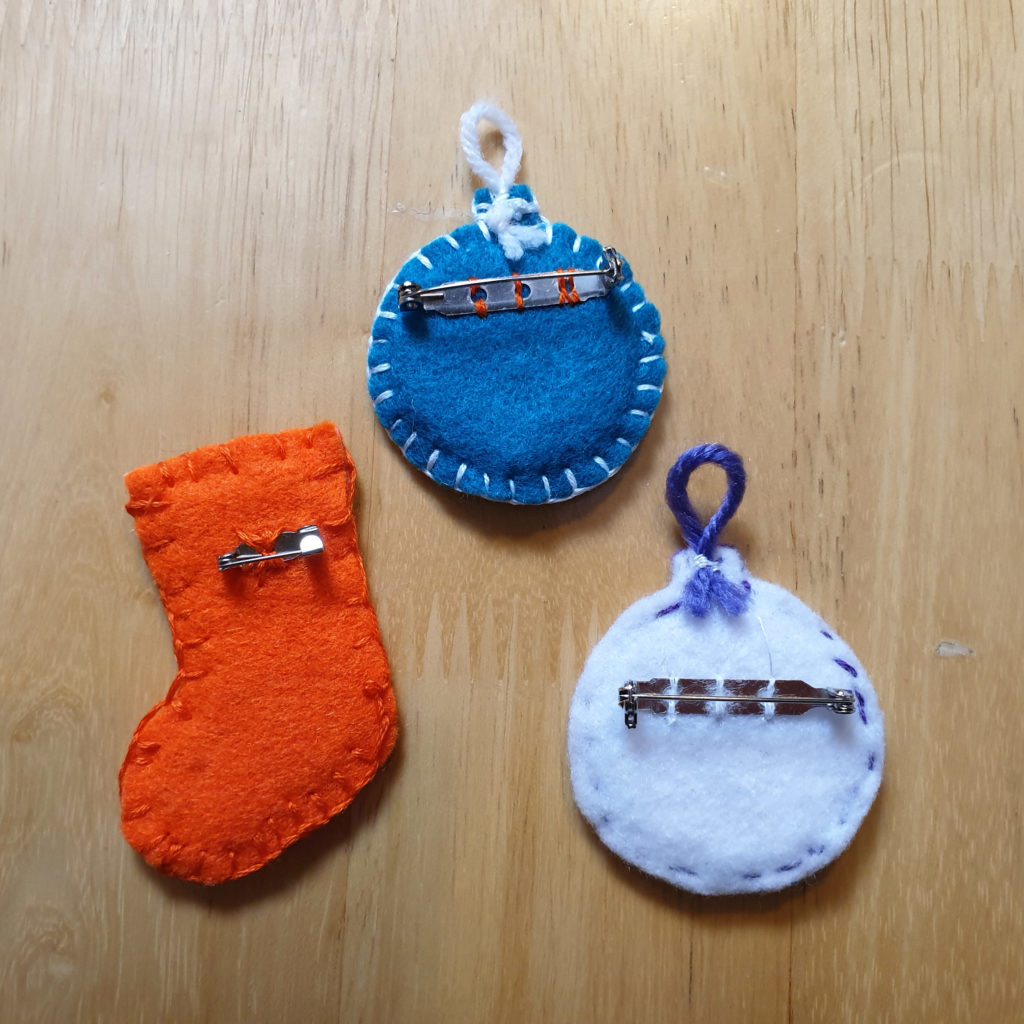
6. Stitch around the edge - and add a yarn loop to the bauble design
You can choose your preferred stitch for the border. In the video below, Phill and I both used blanket stitch, but in the one I made with free machine embroidery decoration, I used chain stitch.
Finally, for the bauble design, I secured a small length of yarn in the desired colour to the top back of the shape.
Watch it on the Vlog!
You can watch Phill and I make these in the video below:
Personalised cushion with a zip
- Post author:clobbercreations
- Post published:November 24, 2019
- Post category:Accessories/Sewing/Stash Busting
- Post comments:0 Comments
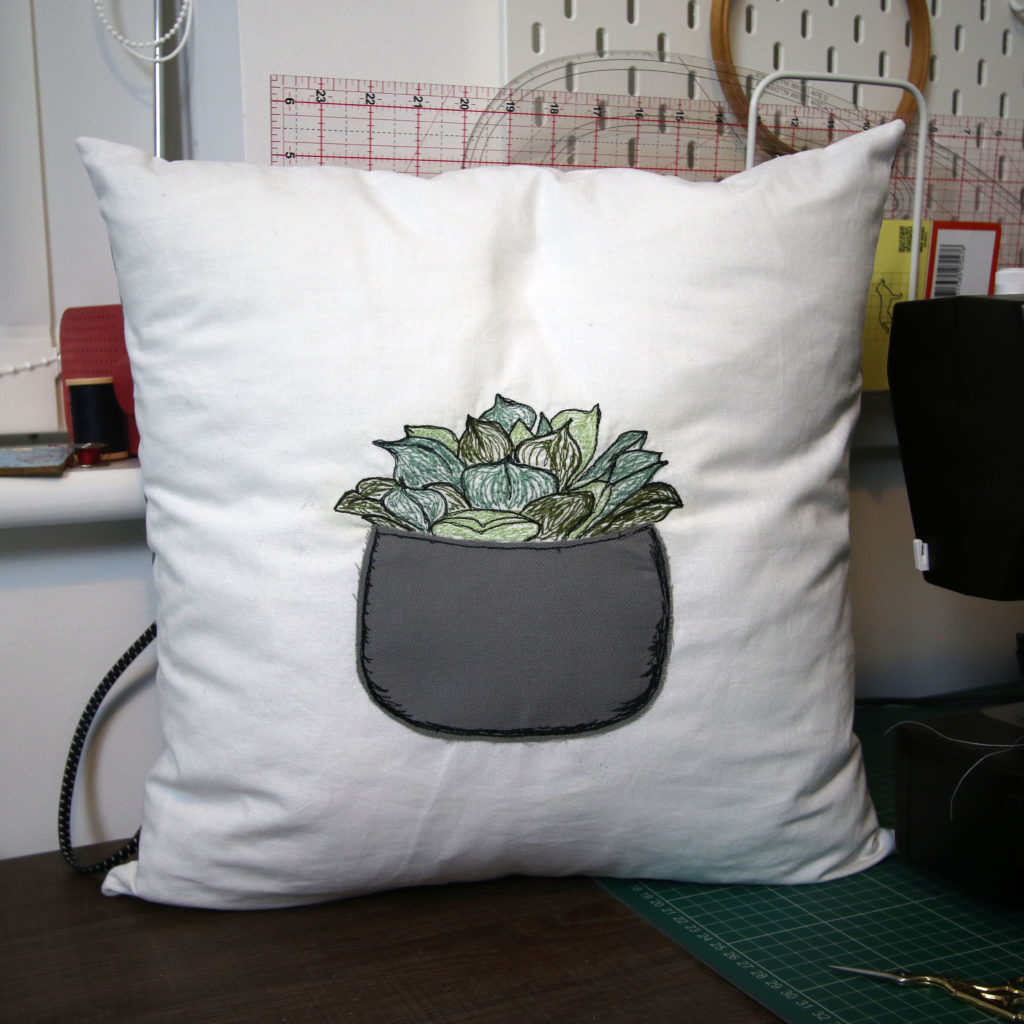
Here is the first cushion I have made with a zip! Usually I use the overlapped back design when I make a cushion, but when a lack of fabric prompted a different approach, the zipped method was the solution.
DIY Water Bottle Carrier (Tutorial)
- Post author:clobbercreations
- Post published:November 10, 2019
- Post category:Accessories/Craft Skills/Inspiration/Sewing/Stash Busting/Videos
- Post comments:0 Comments
Today I am excited to (finally) share a tutorial I filmed a while back! It’s a water bottle carrier which I use practically every day. I thought it might help someone else who would like one or wants a gift idea!
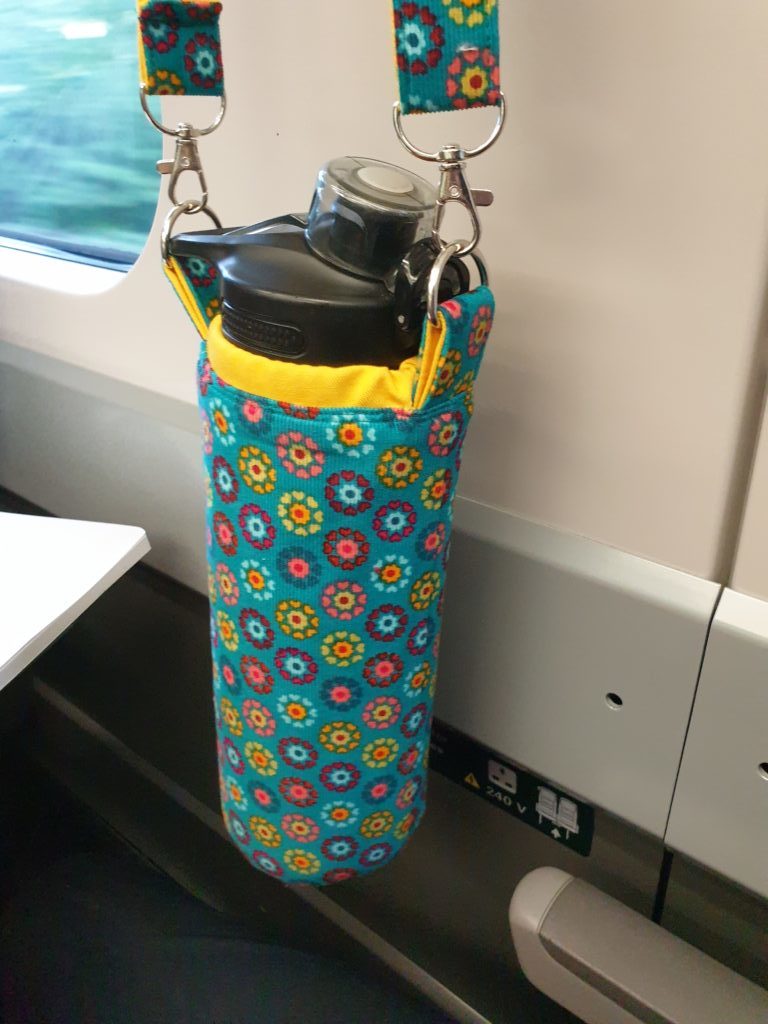
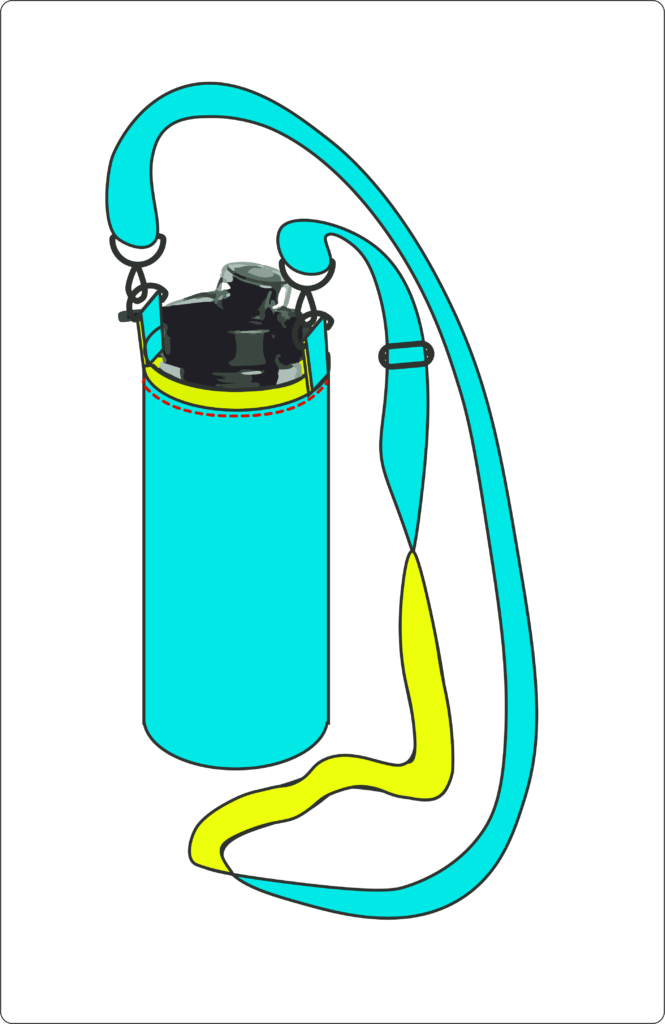
DIY Zipped Purse
- Post author:clobbercreations
- Post published:October 13, 2019
- Post category:Accessories/Sewing/Stash Busting
- Post comments:0 Comments
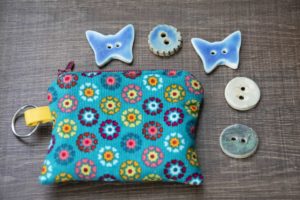
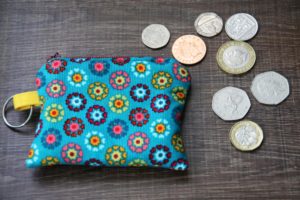
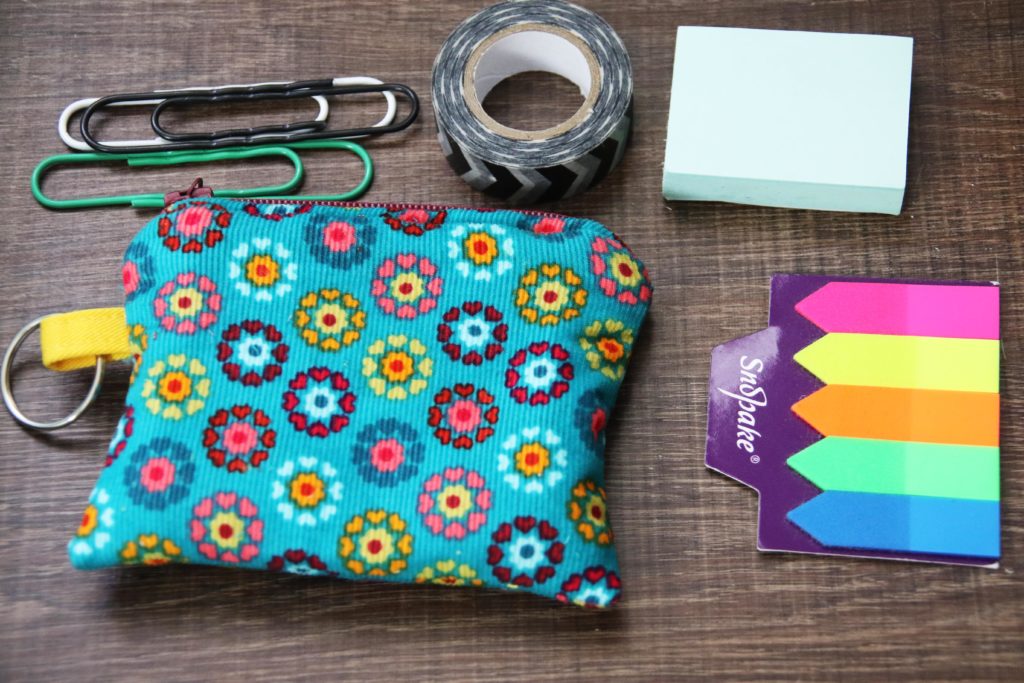
I recently showed you the bag I made for work. I have a few small items I take to work and I always struggled to find them in my old bag. Seeing as I had some leftover fabric, I decided to create a small zipped purse to keep these items together. I’ve shared the process here.
In the photos above, you can see a few suggestions on how to use your finished purse – the possibilities!
Pattern Review: Debbie Shore Office Bag
- Post author:clobbercreations
- Post published:October 6, 2019
- Post category:Accessories/Sewing
- Post comments:0 Comments
I’m going a bit different this week with my pattern review and sharing my thoughts on an accessory pattern – the office bag from “Sew Brilliant Bags” by Debbie Shore.
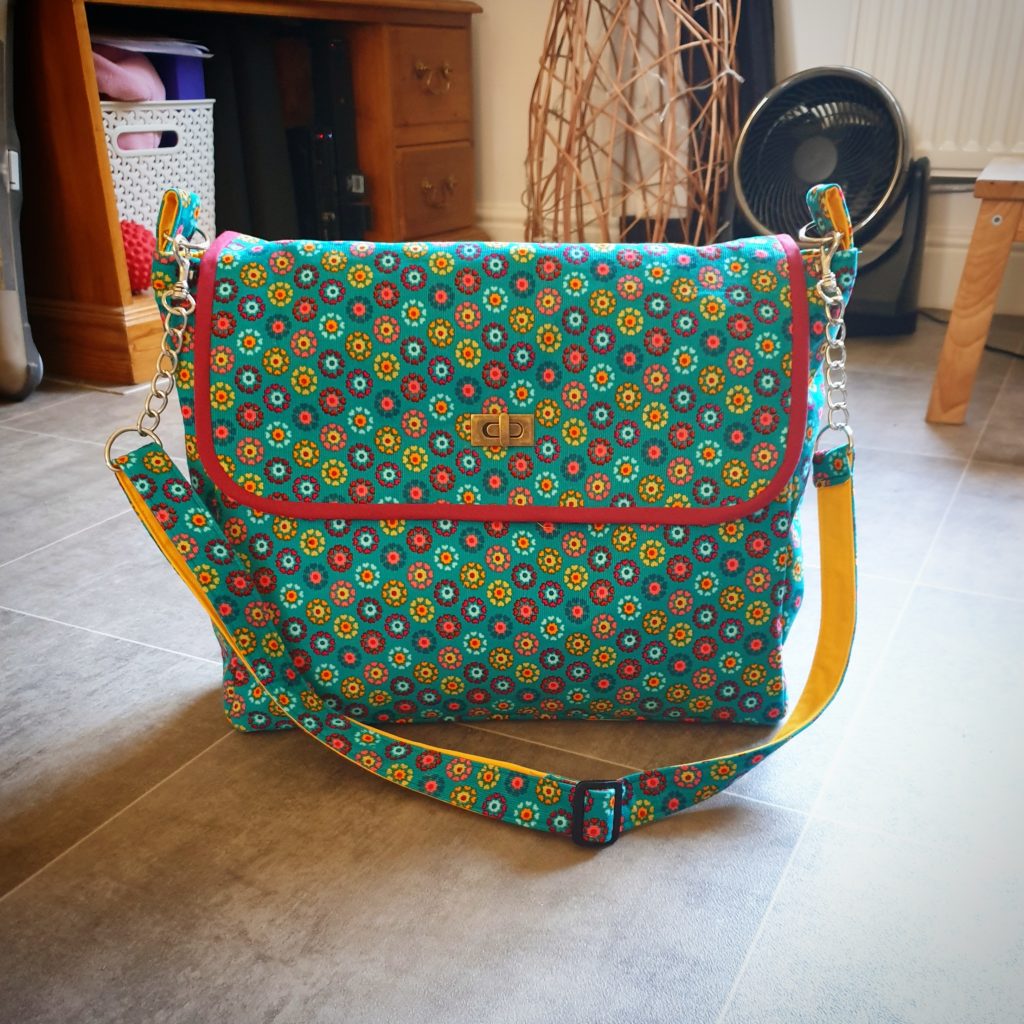
Details
- Pattern name: Office bag
- Variation/Style: As instructed – N/A
- Design House: Debbie Shore
- Size I made: As per instructions (however it may not be accurate due to seam allowance used)
Fabric and other items
I used a brilliant needlecord fabric I picked up from Fabrics Galore a few years ago at the Knitting and Stitching show at Westpoint in Exeter. I used the fabric to make a pinafore, but had some remnants to make up this bag. For the lining/contrast fabric, I used some yellow cotton twill that I had been saving for an apron (hopefully I still have enough to do that too!)
As I was worried that the needlecord may not be strong enough to withstand the wear and tear of being a heavily used bag, I reinforced it with interfacing. The pattern also suggests using fusible fleece to give the bag more structure.
Other attachments included a metal twist clasp for the flap, two D-rings, two swivel clasps and a slider to make the shoulder strap fully adjustable.
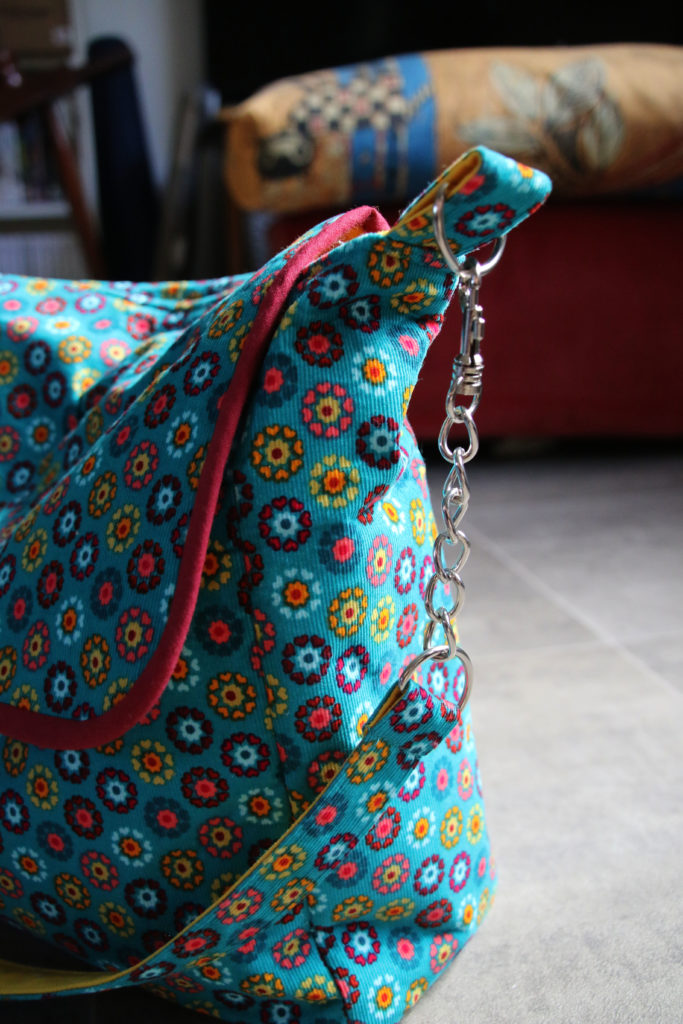
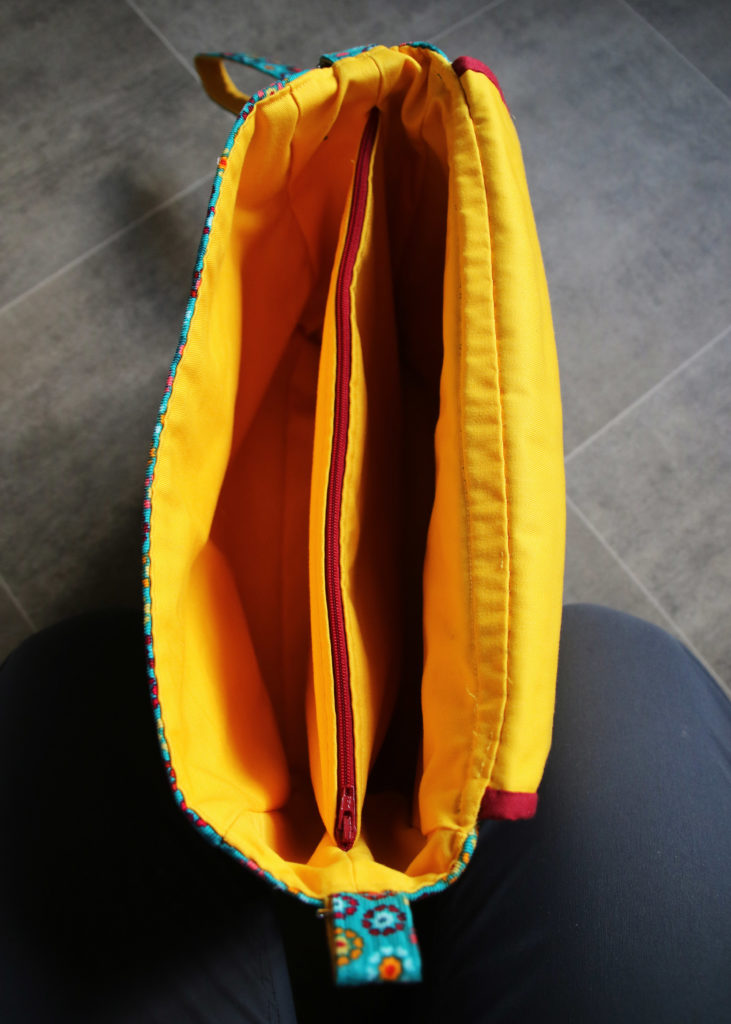
Difficulty
I think this bag looks more complicated than it is, and as it is predominantly made from rectangular shapes, it is quite straightforward. I found the strap a nightmare to turn right sides out, but this may have been an issue with the seam allowance I used, which I will explain more below…
The most challenging aspect for me was stitching the bottom corners of the lining of the bag. If you are not used to bias binding, you may find the flap edging a bit challenging, but Debbie’s instructions at the front of the book on this were very useful, and it is probably a good practice project as there’s not too much of it. I machine stitched the front side to the flap and then hand-stitched the other side of the bias binding tape as I like this finish.
Clarity
Unfortunately, I found that the pattern lacked clarity in areas. First, it is worth noting that she does not state anywhere what the seam allowance is. Perhaps you are meant to add your own, or you are to assume that it is 1/4 inch like most quilting-based projects. As I don’t follow many patchwork or quilt based patterns, I am not used to assuming the seam allowance and presumed there would be an indication somewhere. If I have missed this in the book, please can someone advise which page it is on!
As a result, I used 1/2 inch seam allowances throughout, and I think this caused my straps to be way narrower than they should have been. I ended up finding other D-rings and swivel clasps to use, which was frustrating as I bought some especially for the project, but didn’t have enough fabric to correct the error.
Another error is in the lining measurements for cutting out the base pieces and side pieces. These measurements are mixed up, and I only realised at the point when I was about to stitch them. Fortunately, to correct it, I only had to shorten two of the pieces rather than re-cut as I was using a plain fabric, but if you were using a patterned fabric and the direction of the print mattered more, you would need to cut this correctly!
I didn’t understand the instructions that well for stitching the flap onto the outer bag either, and next time I would just do my own thing rather than try to make myself understand as I wasn’t too happy with the end result in this aspect.
There are some good pictures in the book, but in a way, I felt like there could have been more. However, if you are used to making bags, this may not be an issue.
Design and Fit
Despite the issues I had with clarity, I really love the design of this bag – in fact, I love it more now that I have made it. The reason I love it is because the lining piece means that your bag has three sections – two open sections (of equal size) and in between them is a zipped pocket. I found the construction of this section marvelous and while I may add more pockets to another version, I would definitely make this middle zip divider section again.
I really like the bias binding on the flap as well, and it’s really grown my confidence in using bias binding.
Time Taken
The longest part of the making this bag for me was cutting all the pieces out. While it wasn’t too arduous as it was a series of rectangles, I had to cut a lot of them and as there are no pattern pieces, you need to accurately draw them out yourself. Also, I had the additional step of interfacing all the needlecord fabric pieces.
I reckon it is a project you could do within a weekend comfortably, including the cutting out stage.
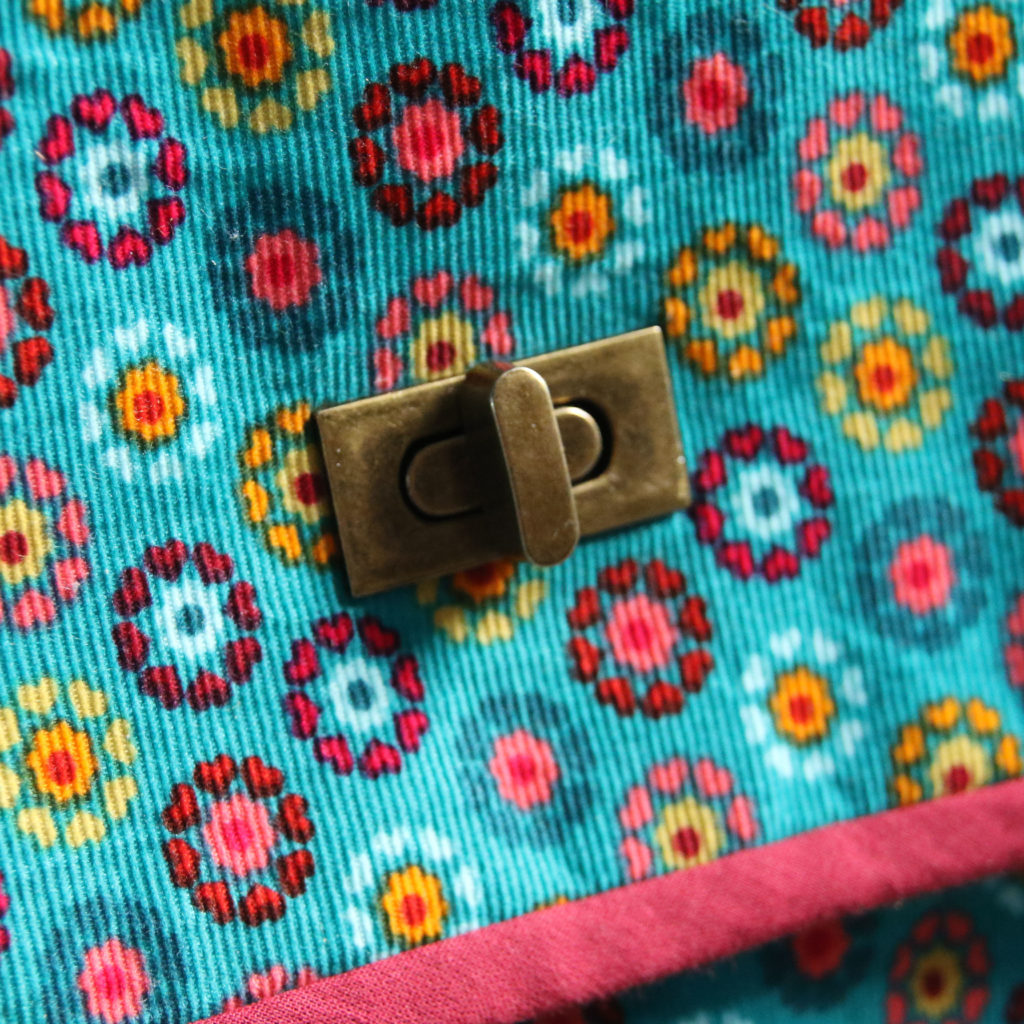
Conclusion
I am really happy with the end result, but I do have some caveats. I would advise anyone doing this pattern or any in the book to check that the measurements make sense to ensure you cut out the correct-sized pieces! Also, have a read through of the pattern first to ensure it makes sense, and to work out whether you want to make any adjustments.
You can watch my video review below:
